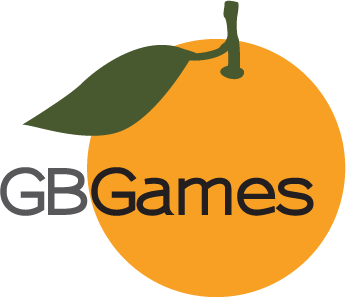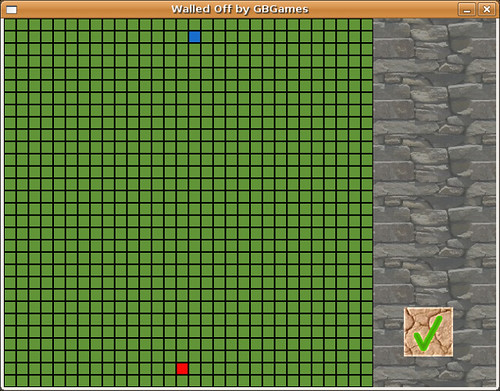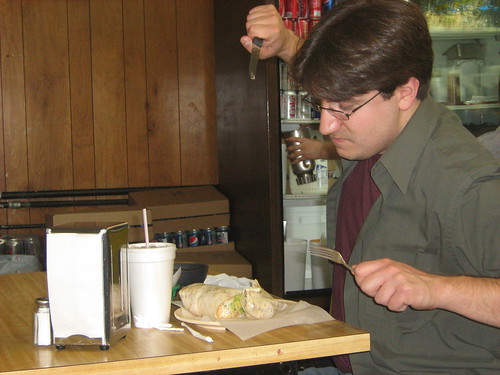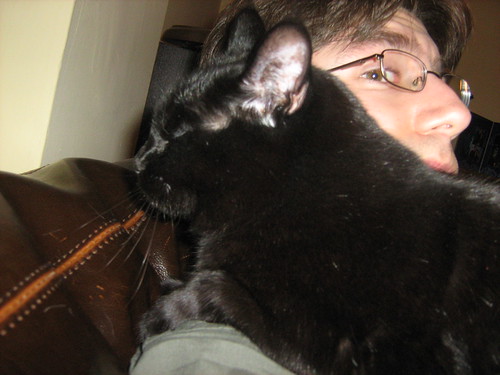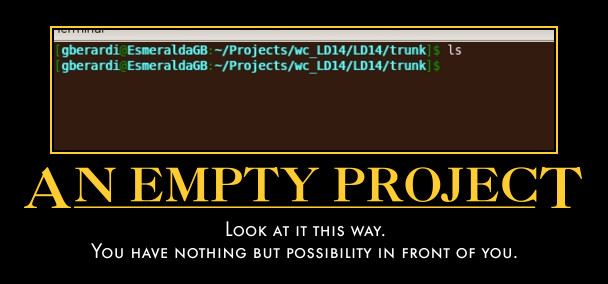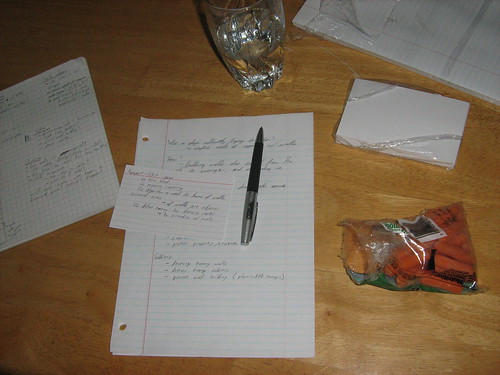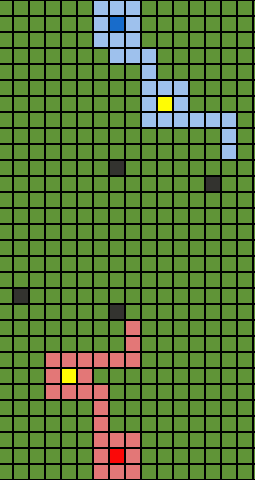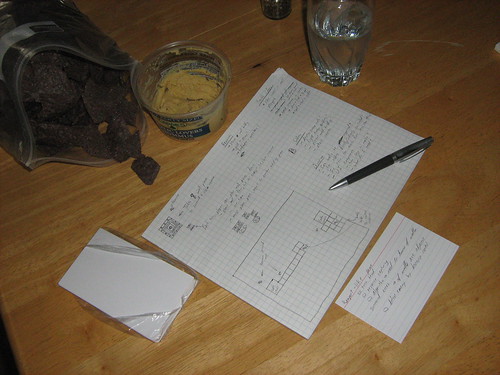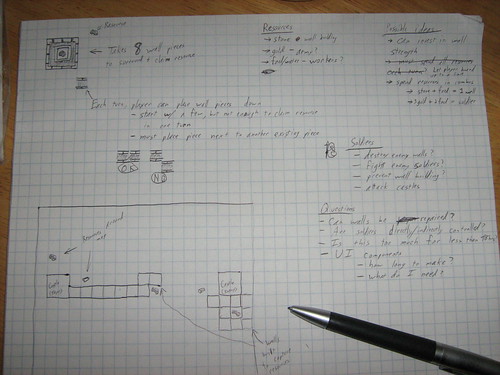It’s not very exciting, so I made it short.
Category: Game Design
Linux binary: 2MB
Ok, so this isn’t even close to a finished game, so you don’t have to play it to know that. However, I might still be able to pull a medal out of the food compo, so I’m submitting.
This is the first LD I wasn’t able to get game play in by the deadline. This project is a long way off from being something that could even resemble fun.
Well, unless you like clicking a box with a check mark in it and knowing that underneath the scenes, it is now the next player’s turn. B-)
Here are screen shots of the project as it stands at the deadline:
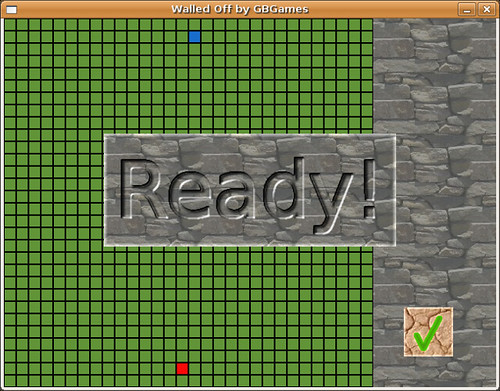
As some of the IRC members noted, the attempt was still beneficial. I learned a lot this time around, and I’m better at game development for it.
I’ve been hard at work, and I’ve been making some decent progress. I can load the level and render it, so that’s good. I have a basic economy that updates based on income, but I don’t have a way to spend it yet or a way to let you know how much you’ve hoarded.
Unfortunately, I ran into the problem of handling the GUI. I want to know when the player has clicked a button, and even though I read up on IMGUI techniques beforehand, I forgot to use them! Suddenly I found myself with code that I needed to gut because it doesn’t work. IMGUI is simple, but there’s only so much time left in the compo.
So let’s eat. I baked one of my favorite LD staples: vegan pizza!

Eating it in sandwich form is much more efficient:

I also made some oatmeal and cranberry cookies:

“What an incredible smell you’ve discovered!”

Back to GUI code. Hopefully I’ll get something resembling game play soon. Why does it always happen at the end of the compo? Sheesh.
I had a good night’s sleep, got some coding in, and have decided on a plan of attack that should result in a completed game. But I have less than 7 hours left. It’s going to be tight.
First, I moved the laptop from the living room to my office. I had to clear a place for it on my desk, which meant moving papers and books to the coffee table in the living room, but what’s the point of having a dedicated work space if I don’t use it? It will be a lot easier to focus just by knowing I’m in a place to do just that.
Second, I showered. It’s almost subconscious, but knowing in the back of my mind that I hadn’t done so today is distracting.
Third, I had lunch:
That’s an awesome-tastic peanut butter and Nutella sandwich that I washed down with apple juice. Note the shout out to all LDers, everywhere, especially those who are essentially making an entire game in the last 7 hours of the competition. This sandwich was for you.
So, I’m clean, I’m full, and I’m in an environment conducive to hardcore concentration and hacking.
Now imagine I put on shades when I say, “Let’s do this” in as bad-ass a way as possible.
Let’s do this.
A friend of mine has come in from out of town for the night, so a few of us went to one of our favorite college spots: Allende Restaurant, or what I like to affectionately call Club Allende. They have the best burritos in Chicago!
I ordered a vegetarian burrito and horchata (rice water).
That burrito is going DOWN!
It seems that most of my pictures this competition are of the food I’ve been eating, so here’s picture of my “work environment”:
What you don’t see on the blanket to the left in the picture is my cat Diego. Gizmo was on the chair on the right. They wait until I write a line of code, and then they pounce. I should move this effort into my office for some privacy.
Speaking of code, I have about 13 hours left in the compo and almost no code. This is going to be either a lot of fun or a lot of pain. And I know I’m having lunch with my parents today, so that’s even less time. Wish me luck!
One of my favorite things to eat is a crispy, crunchy Granny Smith apple.
Ok, so if you saw my previous post, you know that I have absolutely no code, and the first 24 hours are almost up! So as soon as I decided to start filling my project directory with brilliance, I’m attacked for my ambition:
She always does this. I could be idling away online for hours, but as soon as I want to do something productive, guess who is crawling on my lap and over my shoulder, preventing me from computering? Gizmo, you’re lucky that you’re cute.
I tried asking specific questions about what I would like the player to actually DO in the game. What’s the goal? How does he/she achieve success? What challenges does the player face, and what tools do I provide him/her to deal with them?
I had some baby carrots to tide me over until I’m ready to eat a meal again.
In this image, you can see that I’ve started sketching some GUI components.
When I start working on the game in earnest, I’m going to try to have the graphics ready before I write the code for them. And I need to remember not to worry about making them look fantastic. I waste too much time fiddling with each pixel.
In this image, you can see that Red and Blue just can’t seem to be peaceful in any game, and they are building walls to surround resources, claiming them. There will be a variety of resources, and those resources let you purchase more walls to build each turn and hire more soldiers.
Using 16×16 tiles means that there isn’t a lot of room for detail. Abstract is easier and faster for me, but it also provides the challenge of accurately conveying to the player what is happening. I’d like to get a game working as fast as possible. If the maps are too large, then I can try 32×32 tiles, which are much nicer for detail. But again, I’m not an artist, so I should focus on code and abstract art for now.
And I should get coding as soon as I can. The first day is almost over!
I was originally planning on sketching out some basic designs for each of my main ideas, but I had a lot of fun making the one I started with that I decided that it was the game I was going to make.
As you can see, I had some snacks while working on this one: blue corn chips with garlic lover’s hummus.
And here’s a close-up of the initial design:
